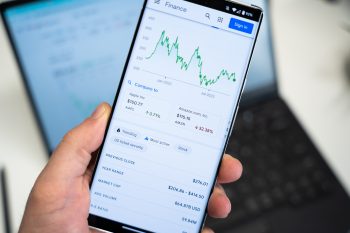
A Guide for Day-Trading Crude Oil
In addition to the underlying forecast for the physical commodity and the dynamics of global supply and demand, traders’ planned activities also significantly impact the price of crude oil. Day traders capitalize on the oil price’s ongoing volatility to increase their profits.
Instead of determining the “actual” worth of crude, day trading crude oil is more about making predictions about short-term price changes. Day traders can profit whether oil prices rise or decrease by combining long and short contracts. Start your Oil trading journey by using the Oil Profit app, the most recommended trading platform online.
Traders carry out this activity without ever touching crude oil. Instead, the trading account reflects the earnings or losses, and you conduct all trading operations electronically. Futures contracts and exchange-traded funds are the two securities most frequently utilized to do this (ETFs).
Futures Exchanges
A futures contract is a commitment to buy or sell a particular commodity, such as wheat, gold, or crude oil, at a predetermined price in the future. Day traders have no desire to purchase those goods. Day traders finish all open positions each day. Every trade makes a profit or a loss based on the price at which they initially purchased or sold the contract and the price at which they subsequently sold or bought it to close out the trade.
People can trade crude oil futures on the NYMEX exchange operated by CME Group in the United States. You can purchase and sell two kinds of crude oil, each with a unique contract. The E-mini trade contracts vary in $0.025 increments on an exchange, while the CL price moves in $0.01 increments. “Ticks” are the name for these divisions. You can calculate your profit or loss by counting ticks while buying or selling a futures contract.
ETFs for Day Trading Crude
A fund that trades on a stock exchange, such as the United States Oil Fund, is another option for day trading crude (USO). This method may be more straightforward for beginners to understand because they may trade changes in the price of crude oil using their presumably already-existing stock trading account. Natural oil ETF values consider daily percentage price movements.
Although you can day trade individual shares, you usually trade ETFs (like stocks) in lots of 100 shares. If the price changes by one cent and you own 100 shares, your profit or loss is one dollar. Options traders cannot trade single shares since options contracts usually cover at least 100 shares of the underlying security.
Minimum Trading Amounts for ETFs
According to American law, “pattern day traders” of stocks and ETFs must keep balances in their margin accounts of at least $25,000.
A pattern-day trader opens and closes positions on the same day at least four times per week. Beyond that, specific brokerages may impose additional restrictions, but you must have at least $25,000 to begin day trading seriously. Beyond that, your capital requirements for day trading a crude oil ETF depend on the ETF’s price, your position size, and whether you’re employing leverage (using borrowed money).
Crude Oil Trading- A Volatile Market
Keep in mind that the oil market might sometimes be unstable. The oil market reached record lows in April 2020. For comparison, on April 14, 2020, the oil ETF USO sold for about $4.66. Two weeks later, on April 28, 2020, USO completed a 1-for-8 reverse stock split at the close of business, raising the net asset value per share while reducing the number of outstanding shares. 7 USO closed at $18.86 per share on May 1, 2020, the market close.
Before investing in oil, or any industry-specific fund for that matter, use caution and carefully weigh all of the risks since there is a low oil demand, and it is unlikely that prices will return to where they were in 2019 by the end of 2020.